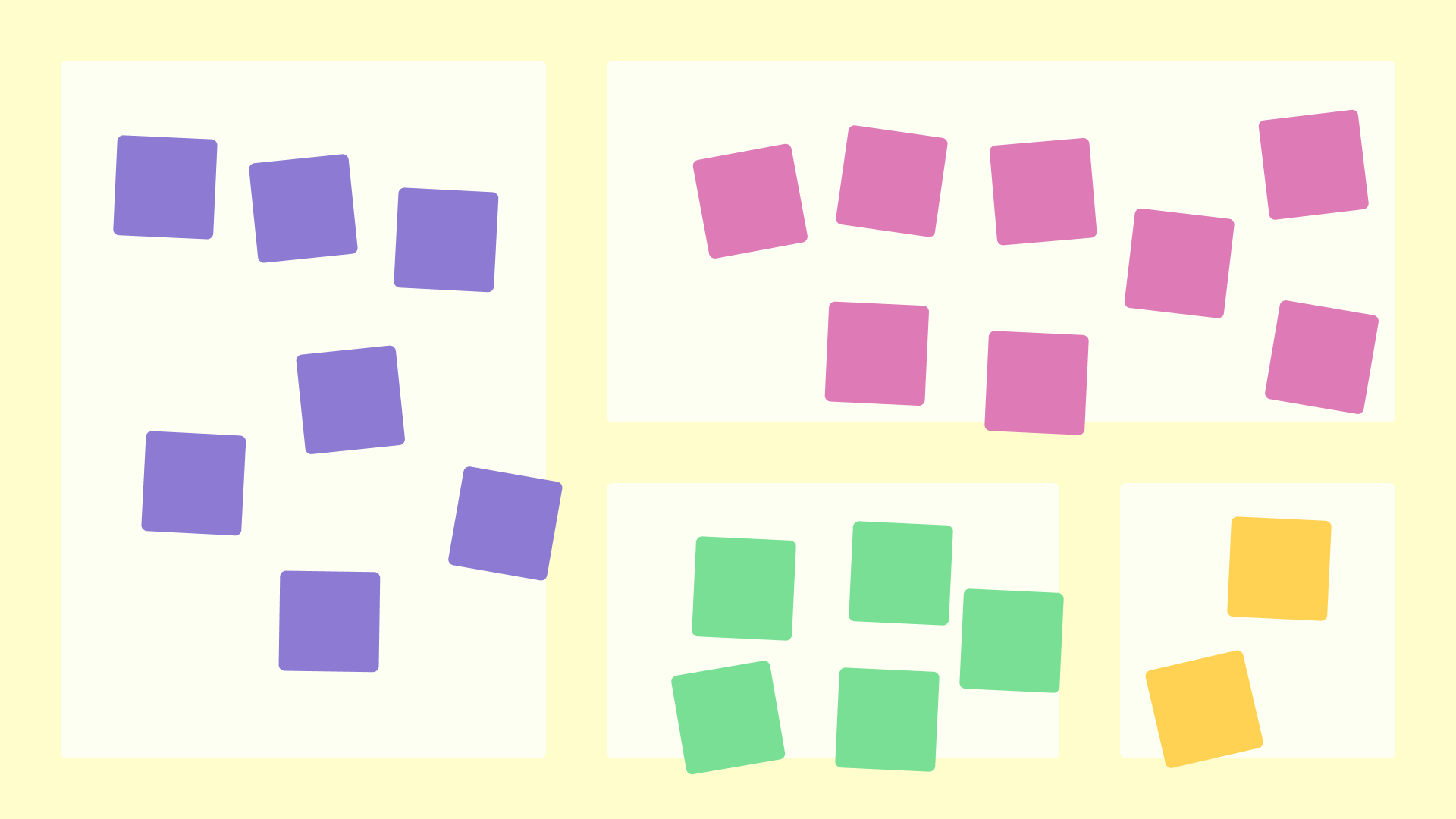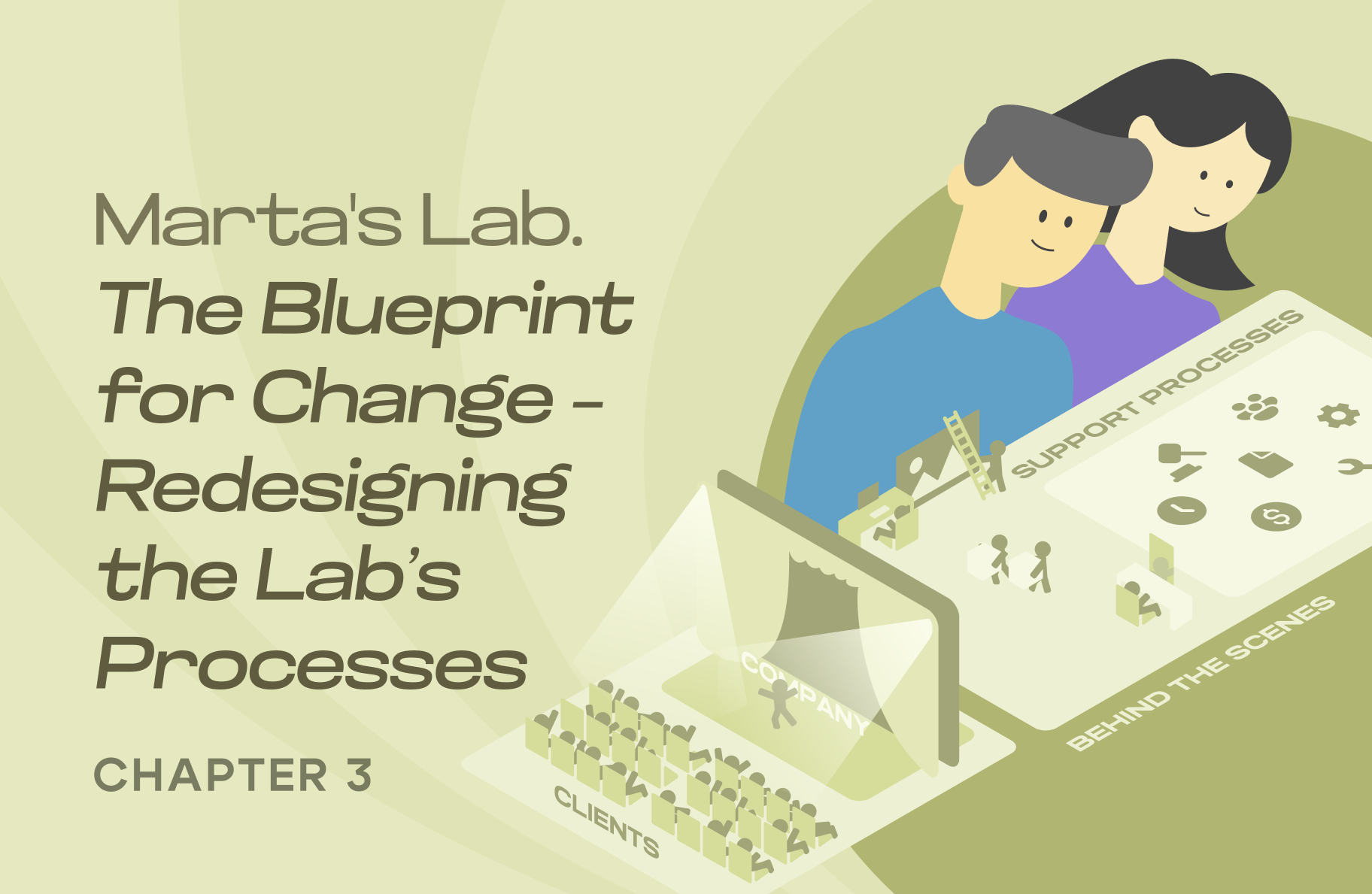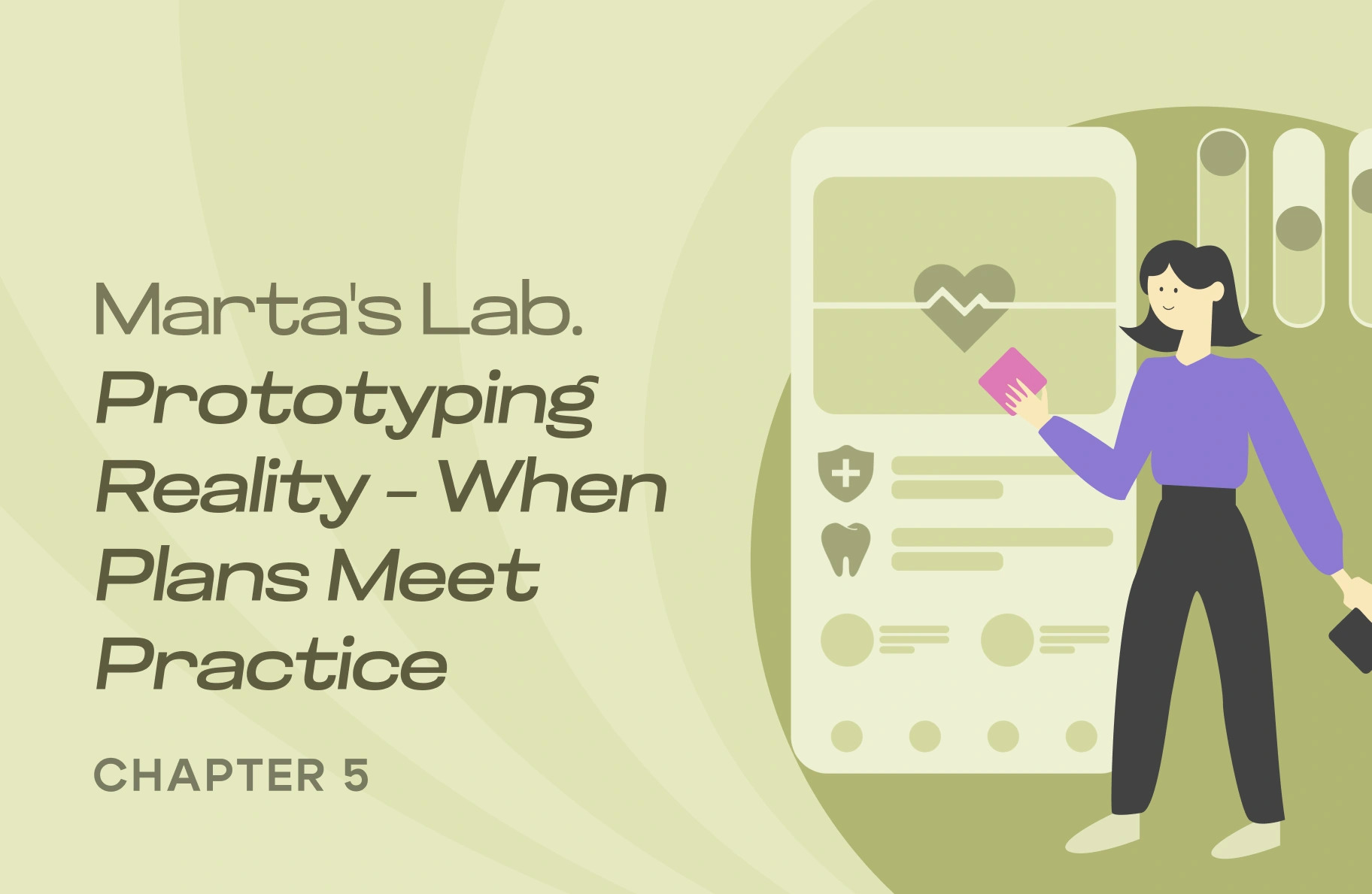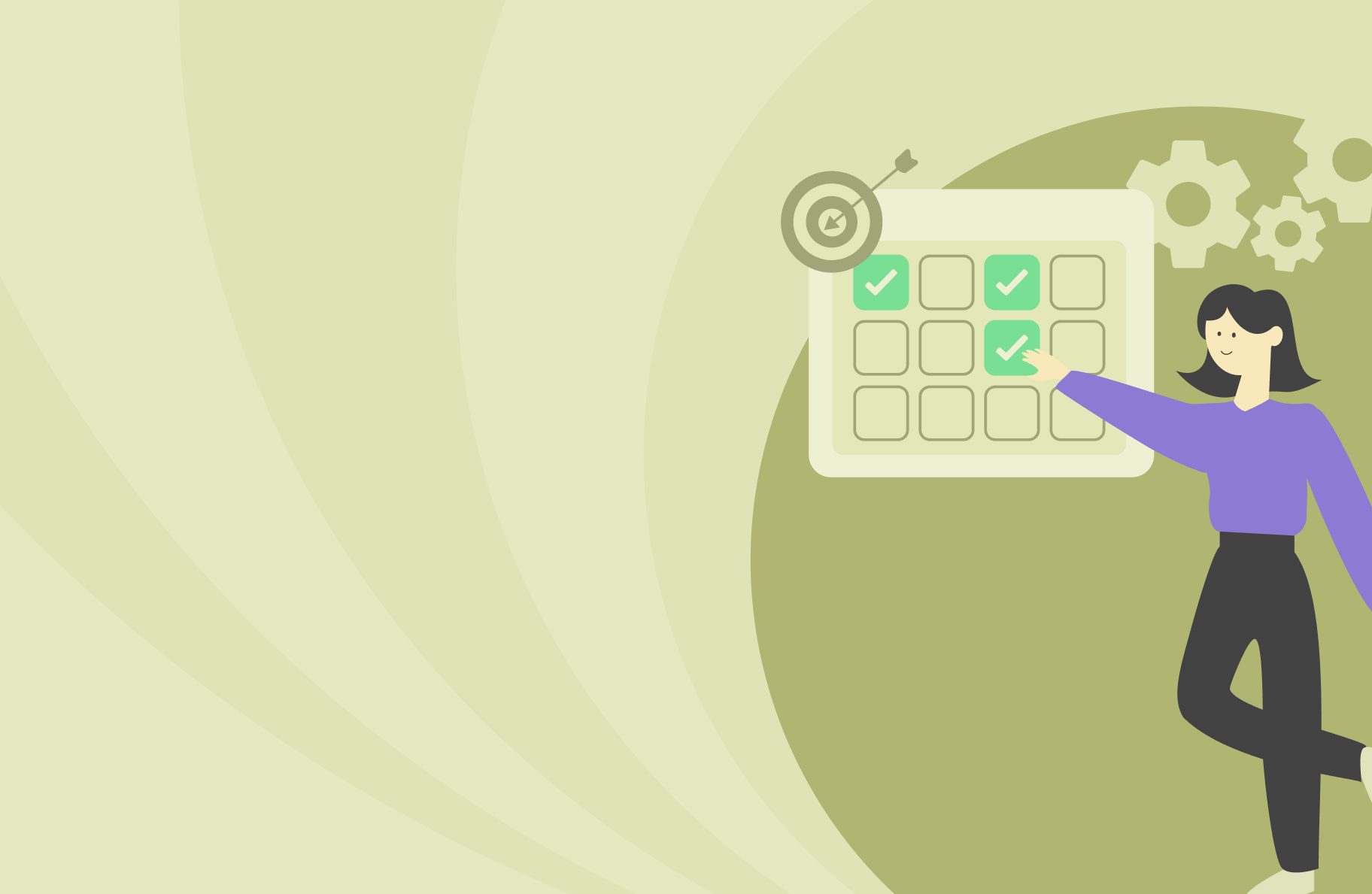
Marta stood at the front of the room, a mix of excitement and nervous energy coursing through her. On the whiteboard behind her, the service blueprint from their last session was taped up — a sprawling, colorful map that laid bare the lab’s strengths, weaknesses, and untapped potential.
Levi
Alright. We’ve mapped the journey. We’ve explored how things work or don’t behind the scenes. Now comes the most important question: What are we going to do about it?
The First Step: Identifying Priority Issues
Levi handed out sticky notes and markers, asking each team member to jot down what they believed were the most pressing issues revealed in the blueprint. Marta watched as Yasmin, Tom, and Isabel scribbled furiously.
Within minutes, the board was alive with a flurry of ideas:
- “Order submissions are chaotic, dentists hate our forms.”
- “We’re too slow with updates; clients don’t know where their cases stand.”
- “Delivery delays are killing trust.”
- “We’re not proactive, as clients have to chase us for answers.”
Levi grouped the notes into themes, stepping back to admire the clusters.
Levi
Here’s what I see. Communication, reliability, and efficiency. These are your big three.
Tom
We’ve known these problems exist, but seeing them laid out like this is different. It’s... undeniable.
Spotting Opportunities: What Could Be
Levi
Now, let’s flip the script. For each issue, I want you to think about what success would look like. What’s the opportunity here?
Isabel
For communication, we could create a portal where clients can track their orders in real time. No more endless calls or emails.
Yasmin
And for reliability, maybe we could test a checklist system to make sure every order is double-checked before it leaves the lab.
As ideas poured in, Marta felt a swell of pride. This wasn’t just about fixing problems anymore, it was about imagining a better version of their lab.
Setting Clear Objectives
Levi paused the brainstorming to bring the team back to focus.
Levi
Good ideas, but we need to turn them into actionable goals. Let’s pick one issue and define a clear objective.
The team agreed to tackle order tracking first. Together, they drafted a goal:
For each issue, they followed the same process, crafting specific, measurable goals:
Prioritizing Actions
Levi
Now, we can’t tackle everything at once. Let’s prioritize.
Levi drew a simple two-by-two grid on the whiteboard, labeling the axes Impact and Effort.
The team placed each goal on the grid, with the tracking system landing in the High Impact, Medium Effort quadrant. Delivery improvements, while impactful, were marked as high effort and saved for later.
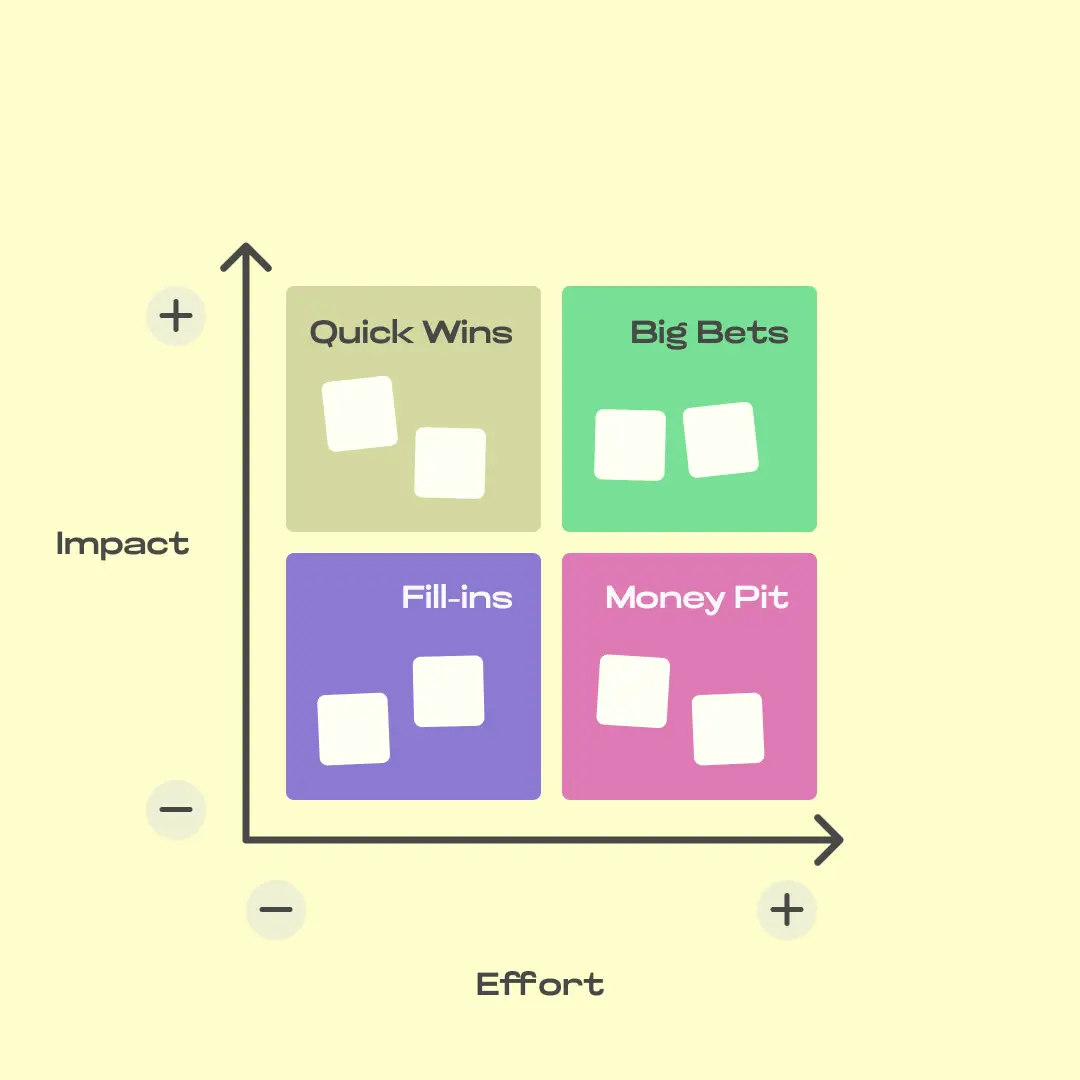
By the end of the exercise, the team had a clear roadmap of where to start:
- Test the order-tracking system.
- Introduce a checklist for quality control.
- Start sending proactive updates to clients.
The Turning Point
Marta looked around the room. What had once been a group hesitant to engage in change now buzzed with determination. She saw it in Tom’s steady focus, Yasmin’s animated gestures, and Isabel’s quick notes.
Marta
This feels different.
Levi
You’re not just identifying problems — you’re empowering your team to solve them. That’s the essence of service design.
What’s Next?
As the meeting wrapped up, Marta felt a renewed sense of purpose. The team had laid the groundwork for real change, and the next step was clear: turning their prioritized goals into tangible prototypes.
But would their ideas hold up in the real world? Could they design solutions that worked seamlessly for both the lab and its clients?
In the next chapter, the team takes the leap into prototyping and testing, discovering what works, what doesn’t, and how to refine their vision further.
Stay tuned for Marta’s journey, and don’t forget to subscribe via the form below to follow along as the transformation unfolds.
